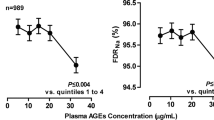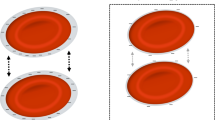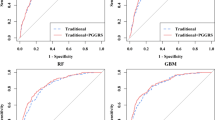Abstract
Genetic variation in the human angiotensinogen gene (AGT) influences plasma AGT concentration and susceptibility to essential hypertension by a mechanism that remains to be clarified. When one or two additional copies of the gene were inserted by gene titration (by homologous recombination with gap-repair at the AGT locus), both plasma AGT and arterial pressure were elevated in the physiological range in the mouse. The causal dependency between plasma AGT and blood pressure and the relative contribution of the various tissues that express AGT to these two phenotypic parameters remained to be determined. To address these issues, we generated a transgenic mouse with overexpression of the mouse AGT gene restricted to the liver. The transgene was examined in two contrasted genetic backgrounds, the sodium-sensitive C57BL/6J and the sodium-resistant A/J. Transgenic and control male animals underwent continuous cardiovascular monitoring by telemetry for 14 days while under a standard sodium diet (0.2%). Moderate but significant increases in plasma AGT (40%, p = 0.01) and systolic blood pressure (4–6 mmHg, p ranging from 0.01 to <0.001) were observed in the sodium-sensitive background, but not in the sodium-resistant animals. Statistical analysis of a large number of consecutive, repeated measurements of blood pressure afforded power to detect small effects in the physiological range by use of advanced mixed models of analysis of variances and covariances. Although plasma renin activity was increased in the sodium-sensitive background, it did not reach statistical significance. These observations underline a potential contribution of systemic AGT to the mechanism of AGT-mediated hypertension, but the significance of sodium sensitivity in the genetic background suggests participation of the kidney in expression of the elevated blood pressure phenotype, a matter that will warrant further studies. They also highlight the challenge of identifying the contribution of individual genes in complex inheritance, as their effects are modulated by other genetic and environmental determinants.
Similar content being viewed by others
Log in or create a free account to read this content
Gain free access to this article, as well as selected content from this journal and more on nature.com
or
References
Bloem LJ, Manatunga AK, Tewksbury DA, Pratt JH (1995) The serum angiotensinogen concentration and variants of the angiotensinogen gene in white and black children. J Clin Invest 95:948–953
Bohlender J, Menard J, Ganten D, Luft FC (2000) Angiotensinogen concentrations and renin clearance: implications for blood pressure regulation. Hypertension 35:780–786
Boustany CM, Bharadwaj K, Daugherty A, Brown DR, Randall DC, Cassis LA (2004) Activation of the systemic and adipose renin-angiotensin system in rats with diet-induced obesity and hypertension. Am J Physiol Regul Integr Comp Physiol 287:R943–R949
Cowley AW, McCaa RE (1976) Acute and chronic dose-response relationships for angiotensin, aldosterone, and arterial pressure at varying levels of sodium intake. Circ Res 39:788–797
Danser AH (2003) Local renin-angiotensin systems: the unanswered questions. Int J Biochem Cell Biol 35:759–768
Davisson RL, Ding Y, Stec DE, Catterall JF, Sigmund CD (1999) Novel mechanism of hypertension revealed by cell-specific targeting of human angiotensinogen in transgenic mice. Physiol Genomics 1:3–9
Fukamizu A, Sugimura K, Takimoto E, Sugiyama F, Seo MS, Takahashi S, Hatae T, Kajiwara N, Yagami K, Murakami K (1993) Chimeric renin-angiotensin system demonstrates sustained increase in blood pressure of transgenic mice carrying both human renin and human angiotensinogen genes. J Biol Chem 268:11617–11621
Gross V, Luft FC (2003) Exercising restraint in measuring blood pressure in conscious mice. Hypertension 41:879–881
Hall JE, Brands MW, Henegar JR (1999) Angiotensin II and long-term arterial pressure regulation: the overriding dominance of the kidney. J Am Soc Nephrol 10(Suppl 12):S258–S265
Haston CK, McKerlie C, Newbigging S, Corey M, Rozmahel R, Tsui LC (2002) Detection of modifier loci influencing the lung phenotype of cystic fibrosis knockout mice. Mamm Genome 13:605–613
Hatae T, Takimoto E, Murakami K, Fukamizu A (1994) Comparative studies on species-specific reactivity between renin and angiotensinogen. Mol Cell Biochem 131:43–47
Inoue I, Nakajima T, Williams CS, Quackenbush J, Puryear R, Powers M, Cheng T, Ludwig EH, Sharma AM, Hata A, Jeunemaitre X, Lalouel JM (1997) A nucleotide substitution in the promoter of human angiotensinogen is associated with essential hypertension and affects basal transcription in vitro. J Clin Invest 99:1786–1797
Jennrich RI, Schluchter MD (1986) Unbalanced repeated-measures models with structured covariance matrices. Biometrics 42:805–820
Jeunemaitre X, Soubrier F, Kotelevtsev YV, Lifton RP, Williams CS, Charru A, Hunt SC, Hopkins PN, Williams RR, Lalouel JM et al (1992) Molecular basis of human hypertension: role of angiotensinogen. Cell 71:169–180
Kim HS, Krege JH, Kluckman KD, Hagaman JR, Hodgin JB, Best CF, Jennette JC, Coffman TM, Maeda N, Smithies O (1995) Genetic control of blood pressure and the angiotensinogen locus. Proc Natl Acad Sci USA 92:2735–2739
Kim HS, Lee G, John SW, Maeda N, Smithies O (2002) Molecular phenotyping for analyzing subtle genetic effects in mice: application to an angiotensinogen gene titration. Proc Natl Acad Sci USA 99:4602–4607
Kimura S, Mullins JJ, Bunnemann B, Metzger R, Hilgenfeldt U, Zimmermann F, Jacob H, Fuxe K, Ganten D, Kaling M (1992) High blood pressure in transgenic mice carrying the rat angiotensinogen gene. Embo J 11:821–827
Kobori H, Harrison-Bernard LM, Navar LG (2001) Enhancement of angiotensinogen expression in angiotensin II-dependent hypertension. Hypertension 37:1329–1335
Kunz R, Kreutz R, Beige J, Distler A, Sharma AM (1997) Association between the angiotensinogen 235T-variant and essential hypertension in whites: a systematic review and methodological appraisal. Hypertension 30:1331–1337
Lalouel JM, Rohrwasser A (2002) Power and replication in case-control studies. Am J Hypertens 15:201–205
Lalouel JM, Rohrwasser A (2007) Genetic susceptibility to essential hypertension. Insight from angiotensinogen. Hypertension 49:597–603
Lantelme P, Rohrwasser A, Gociman B, Hillas E, Cheng T, Petty G, Thomas J, Xiao S, Ishigami T, Herrmann T, Terreros DA, Ward K, Lalouel JM (2002) Effects of dietary sodium and genetic background on angiotensinogen and Renin in mouse. Hypertension 39:1007–1014
Lavoie JL, Sigmund CD (2003) Minireview: overview of the renin-angiotensin system–an endocrine and paracrine system. Endocrinology 144:2179–2183
Massiera F, Bloch-Faure M, Ceiler D, Murakami K, Fukamizu A, Gasc JM, Quignard-Boulange A, Negrel R, Ailhaud G, Seydoux J, Meneton P, Teboul M (2001) Adipose angiotensinogen is involved in adipose tissue growth and blood pressure regulation. Faseb J 15:2727–2729
Morgan T, Craven C, Nelson L, Lalouel JM, Ward K (1997) Angiotensinogen T235 expression is elevated in decidual spiral arteries. J Clin Invest 100:1406–1415
Paul M, Poyan Mehr A, Kreutz R (2006) Physiology of local renin-angiotensin systems. Physiol Rev 86:747–803
Pinkert CA, Ornitz DM, Brinster RL, Palmiter RD (1987) An albumin enhancer located 10 kb upstream functions along with its promoter to direct efficient, liver-specific expression in transgenic mice. Genes Dev 1:268–276
Poulsen K, Jacobsen J (1986) Is angiotensinogen a renin inhibitor and not the substrate for renin? J Hypertens 4:65–69
Rahmouni K, Mark AL, Haynes WG, Sigmund CD (2004) Adipose depot-specific modulation of angiotensinogen gene expression in diet-induced obesity. Am J Physiol Endocrinol Metab 286:E891–E895
Rapp JP (2000) Genetic analysis of inherited hypertension in the rat. Physiol Rev 80:135–172
Smithies O, Kim HS (1994) Targeted gene duplication and disruption for analyzing quantitative genetic traits in mice. Proc Natl Acad Sci USA 91:3612–3615
Snouwaert JN, Brigman KK, Latour AM, Malouf NN, Boucher RC, Smithies O, Koller BH (1992) An animal model for cystic fibrosis made by gene targeting. Science 257:1083–1088
Staessen JA, Kuznetsova T, Wang JG, Emelianov D, Vlietinck R, Fagard R (1999) M235T angiotensinogen gene polymorphism and cardiovascular renal risk. J Hypertens 17:9–17
Stec DE, Keen HL, Sigmund CD (2002) Lower blood pressure in floxed angiotensinogen mice after adenoviral delivery of Cre-recombinase. Hypertension 39:629–633
Sugiyama F, Churchill GA, Higgins DC, Johns C, Makaritsis KP, Gavras H, Paigen B (2001) Concordance of murine quantitative trait loci for salt-induced hypertension with rat and human loci. Genomics 71:70–77
Takahashi S, Fukamizu A, Hatae T, Yamada Y, Sugiyama F, Kajiwara N, Yagami K, Murakami K (1992) Species-specific kinetics of mouse renin contribute to maintenance of normal blood pressure in transgenic mice with overexpressed human angiotensinogen. J Vet Med Sci 54:1191–1193
Tokita Y, Franco-Saenz R, Reimann EM, Mulrow PJ (1994) Hypertension in the transgenic rat TGR(mRen-2)27 may be due to enhanced kinetics of the reaction between mouse renin and rat angiotensinogen [see comments]. Hypertension 23:422–427
Woo DD, Kurtz I (2003) Mapping blood pressure loci in (A/J x B6)F2 mice. Physiol Genomics 15:236–242
Yang G, Merrill DC, Thompson MW, Robillard JE, Sigmund CD (1994) Functional expression of the human angiotensinogen gene in transgenic mice. J Biol Chem 269:32497–32502
Author information
Authors and Affiliations
Corresponding author
Rights and permissions
About this article
Cite this article
Gociman, B., Rohrwasser, A., Hillas, E. et al. Response to genetic manipulations of liver angiotensinogen in the physiological range. J Hum Genet 53, 775–788 (2008). https://doi.org/10.1007/s10038-008-0311-1
Received:
Accepted:
Published:
Issue date:
DOI: https://doi.org/10.1007/s10038-008-0311-1
Keywords
This article is cited by
-
Overexpression of mouse angiotensinogen in renal proximal tubule causes salt-sensitive hypertension in mice
American Journal of Hypertension (2012)



